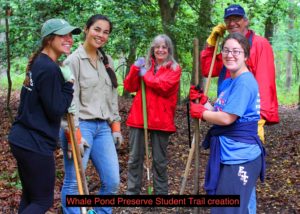What We Have to Offer
Whether it be trails, parks, brook preserves, a lake or a beach… we got it all! Check out all the awesome places to explore.
What are watersheds?
Watersheds are areas of land that channels rainfall and snowmelt to streams, creeks, and rivers eventually to outflow areas such as oceans, bays, or reservoirs. These bodies of water supply our drinking water, water for agriculture and manufacturing, and hosts some of our favorite recreational actives such as canoeing or fishing.
Why We Need Clean and Healthy Watersheds
Watersheds play an important part in sustaining life. Various forms of pollution, including runoff and erosion, can interfere with the health of watersheds. They are important to everyone and everything that uses and depends on water. Watersheds can provide critical services such as clean drinking water, productive fisheries, and outdoor recreation that support our economies, environment, and quality of life.
What you can do to help

Facts and Figures
A national water quality survey of the nation’s rivers and streams showed that 55% of the nation’s flowing waters are in poor biological condition (U.S. EPA, 2013).
Nearly 40% of fish in North American freshwater streams, rivers, and lakes are found to be vulnerable, threatened, or endangered; nearly twice as many as were included on the imperiled list from a similar survey conducted in 1989 (Jelks et al., 2008).